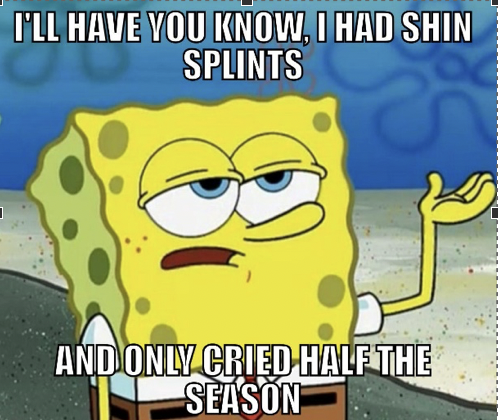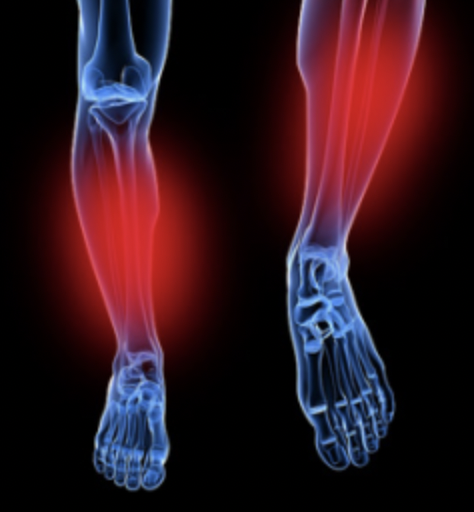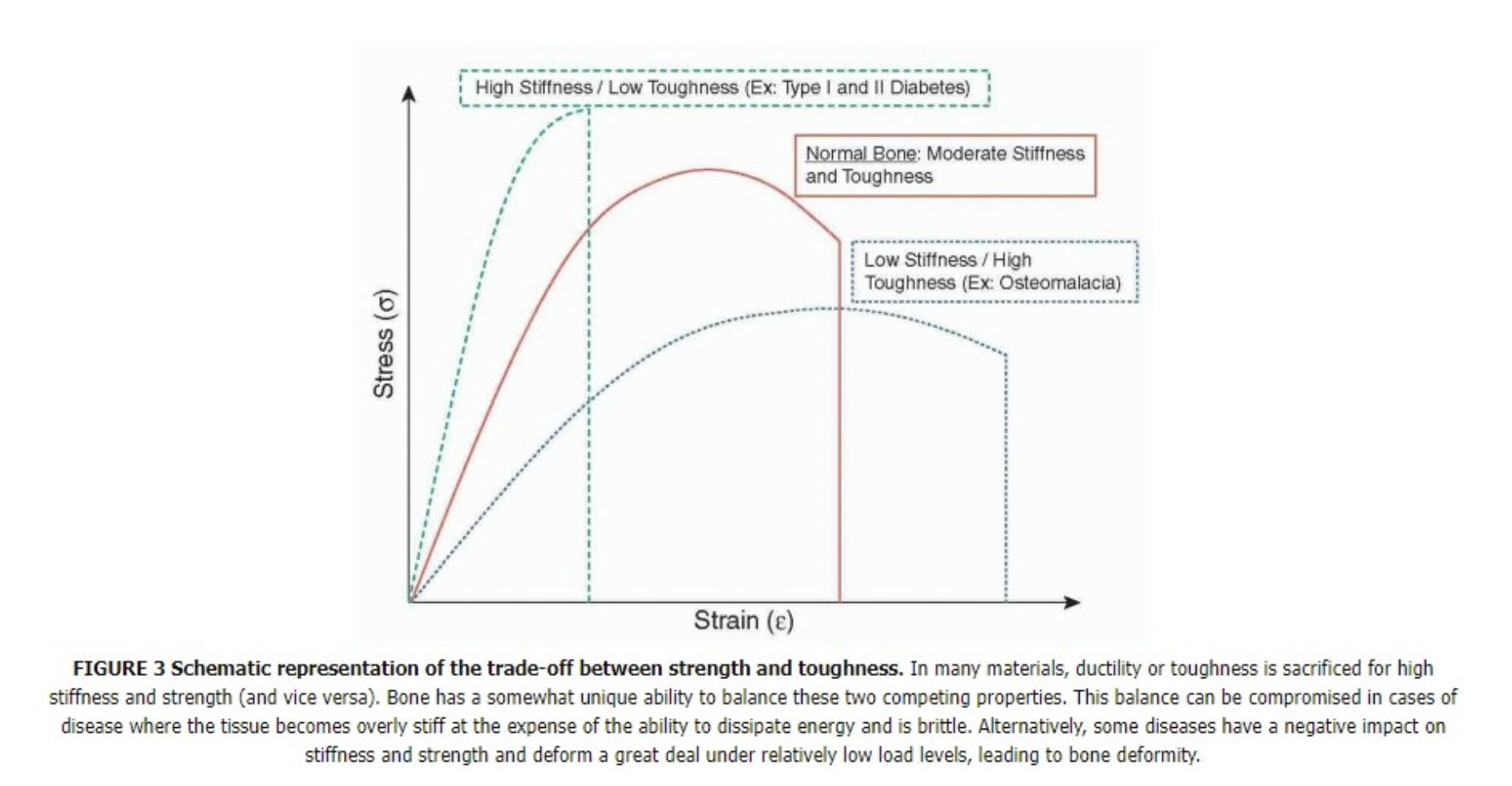Shin Splints – Statistics show that around ¼ of new runners develop shin splints or some kind of shin pain, according to this research studying injured new runners, making it the most common of all injuries in newer runners. Most cases of shin pain do not become stress fractures, though it is worth noting that early intervention could avoid many of these cases.
Although Shin Splints is generally used as blanket term for almost any shin pain, there are some distinct differences between what the pain can be and we feel it’s important to highlight them.
Shin splints/lower leg pain is usually the result of fascial tissue/muscle stress and is noticeable after higher exertion (faster running) or longer runs. Usually with some rest and lowering mileage & intensity and some re-evaluation of training load it can be managed and mitigated in the short term, though will likely return if running form is not evaluated and gait retraining is prescribed; more on this later. In this situation pain is usually not felt when walking.
Medial Tibial Stress Syndrome (MTSS) if left untreated can ultimately develop into stress fractures in the tibia bone. This bone stress injury is caused by bending of the tibia bone in the lower leg. Bones do actually bend; however, these stress reactions/fractures are caused by the bone bending in the wrong direction. You could think of this as a mismatch between bone strength and the load which the bone is being placed under. In some cases, if we manage the load, we can mitigate the situation. In some cases, almost any running load is too much when the running form (over striding/landing on a forward traveling leg) is seen. Click here to watch the video.
Remember bones are designed to bend, they are elastic and they store and return energy. They are not like the bones of a chicken after you’ve roasted it, all brittle and easy to break. This situation couldn’t be further to the reality of what bones in a living body are like. If they were, imagine how they’d react to literally hundreds of pounds of force landing on them thousands of times during a run! Unless you have been diagnosed with a specific condition by your Dr which shows you have a predisposition for bone fractures then it is likely you are suffering either overuse issues, biomechanics (running form) issues, or both.
This doesn’t, however, mean that they are unbreakable! They are designed with a specific load pattern in mind. Shin Splints is an example of this situation. The force of landing on a forward traveling leg creates a bending of the tibia in the wrong direction causing microfractures in the bone. Shin Splints (MTSS) generally occurs on the inner portion of the tibia bone and is a situation which builds up over time
As we know, stress reactions and stress fractures are chronic overuse situations, resulting from repeated overloading of the bone. It is certainly not something to be taken likely or shrugged off and pushed through, contrary to what people on social media forums may say, bone stress reactions and stress fractures do not get better and you cannot run through them. They will absolutely result in a long-term injury. Overuse can occur in a single run if run form is causing the issue.
The cause of these stress fractures is either too much too soon, or in the case of a running form issue, landing on a forward traveling leg creating a hard & fast collision with the ground. However, the cause of that can be multifactorial and generally involves postural imbalances creating an anterior pelvic tilt which causes an early landing of the foot during the gait cycle.
Simply shortening one’s stride is a poor solution to a biomechanical running form issue and in the future when a runner increases mileage or intensity or both, this issue will likely raise its head again as those hard collisions with the ground are still occurring.
Another way to think of stress fractures, is the term “fatigue fracture”. Healthy bones are in a constant state of trauma and repair. It is this cycle which allows us to strengthen bones, and is well known by Wolff’s Law. Bones will adapt to the forces placed upon them. New bone will grow where more stress is found.
Runners with “impatient” personal goals is a problem for new bone formation, shin splints, and repair as it can take so long to occur. Many running programs are simply too short or too intense or a new runner has no idea about running form/drills/how to run well, making these new runners so much more susceptible. These runners will generally appear to be stuck in the injury cycle, and will not allow their body time to recover and repair.
Presentation of shin splint symptoms can include:
- Redness and swelling on the medial tibial area
- May be tender to touch.
- Pain may persist through the day though first thing in the morning the pain may be reduced due to rest.
- Pain in the lower 1/3 of the lower leg may increase during exercise such as running.
Treatment for shin splints includes:
- Immediate load management (decrease of mileage and intensity)
- Decrease in daily stress levels – Lifestyle factors
- Improved nutrition intervention
- Improved sleep
- Self-management of soft tissue care including Self Myofascial Release (The Sling Method)
- Improved Postural situation (The Sling Method)
- Improved gait cycle biomechanics (The Sling Method)
- Isometric exercises avoiding impact or bending stresses (The Sling Method)
If you have questions or want more information on how The Sling Method can help you become a better runner with less injuries,
check out the Facebook group or contact paul@theslingmethod.com




0 Comments